
John Mulholland knows a thing or two about making documentaries. Coming up in the eighties with the Arts Network, John learned from some of the best filmmakers around, and has since been using his skills and interests to create his own documentaries. Hitting Blu-ray this year is Cooper & Hemingway: The True Gen, a 2013 documentary narrated by Academy Award-nominated actor Sam Waterson, and is chock-full of appearances from the silver screen of yesterday including Charlton Heston, Kirk Douglas and Patricia Neal. John tells JustLuxe about his inspirations, his writings and his next project, an untitled documentary exploring the works of American author Elmore Leonard.
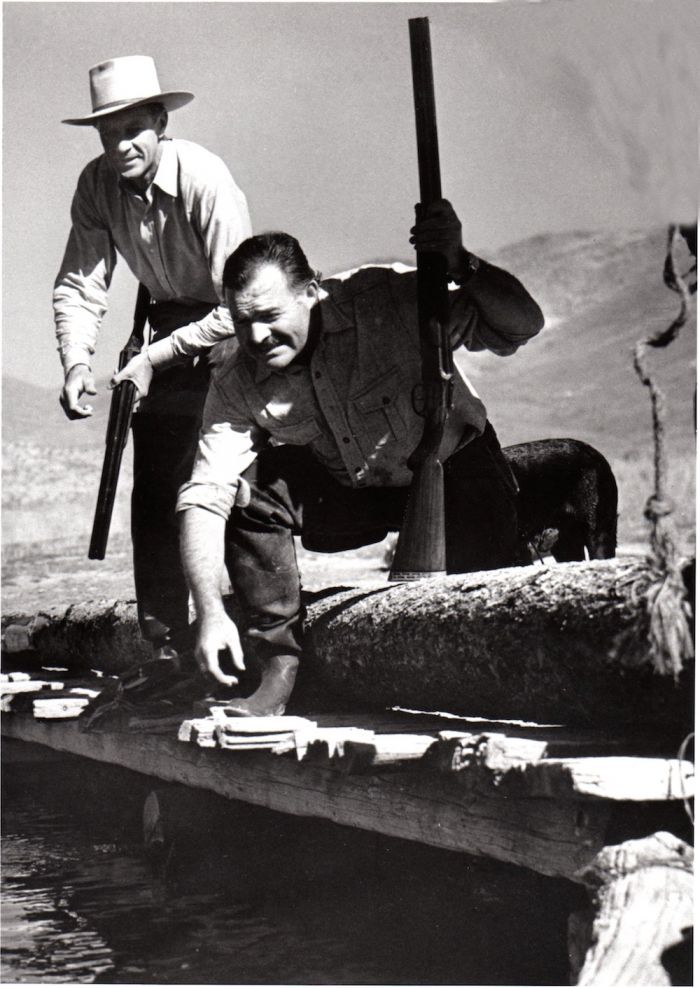
Tell me a bit about your background as a documentary filmmaker.
I started out in the eighties with the Arts Network. Curtis Davis (a visionary in charge of production at NET pre-PBS and responsible in many ways for the birth of public television) brought me in to write and direct documentaries. It was the beginning of cable television, so everything was new and a lot of fun: no set ways to do A or B or C. You couldn’t break rules because there were none, no set running times, it could be 27 minutes or 38, whatever it took to tell the story.
I did docs on a multitude of subjects: Eastern European composers, Charles Dickens and A Christmas Carol, Van Gogh, The Lake Poets, etc. I did one on Macbeth, had Estelle Parsons doing the on-camera wrap. Curt Davis was impressed with the finished piece and offered me a choice to do anything I want.
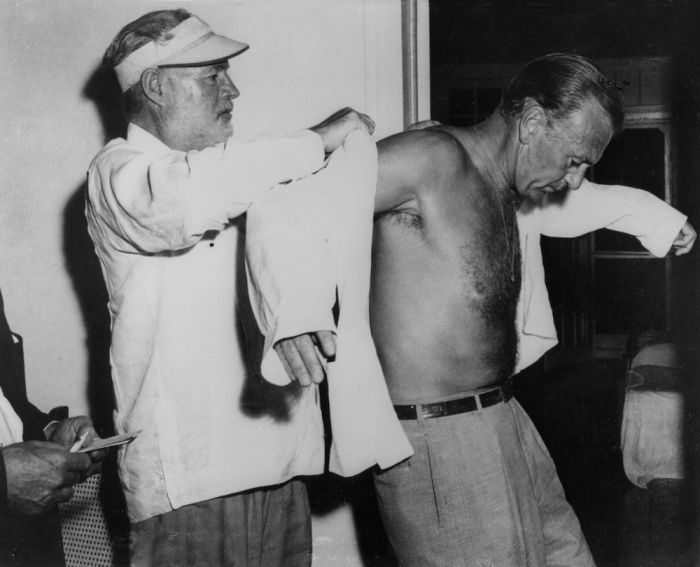
What was it about Gary Cooper and Ernest Hemingway that captured your imagination?
I had been reading Hemingway since my teen years and had been watching Cooper films during the same period. I liked them both, and even in college I felt they both had the same approach to their crafts: less is more. Cooper never seemed to be acting (in the words of Tom Hanks, “he wasn’t acting, he just was”). Hemingway was the same. His style was so without artifice, without affectation. He never called attention to his sentences. They just were.
I’d heard that Hemingway and Cooper had been friends, hunting buddies in Idaho. In the eighties, there were a slew of biographies about Cooper, all of which touched on his friendship with Hemingway. This piqued my interest, because nothing in their public personas indicated they would be friends, so I suggested to Curt Davis a multi-part doc on their friendship. He agreed, and introduced me to several women from classic Hollywood who had relocated to NYC from Hollywood—Fay Wray, Anita Loos, and Lillian Gish.
I was baffled and annoyed at the simplistic “take” on Hemingway from academia and the like: misogynist, war lover, bully, etc. Anyone who had ever really read him would know just how far off these charges were. He had dealt, in his short stories as early as the twenties, with date rape (Up In Michigan), abortion (Hills Like White Elephants), marital dysfunction (Cat In The Rain, Canary For One), post-traumatic stress (Soldier’s Home, Big two-Hearted River, Parts 1 and 2), sexual fluidity (The Sea Change), etc. The public image of Gary Cooper was of a cowboy, not particularly bright, rather slow and unsophisticated, conservative, anti-intellectual, but a genuinely nice guy. Whereas Hemingway’s reputation was the exact opposite—urban, sophisticated, bright, liberal, intellectual, and a genuine bastard. If these personas were accurate, how could they possibly be friends?
During the nineties, Michael Reynolds published a major Hemingway biography that went into some depth on the Hem/Coop friendship; I met Reynolds and he urged me to pursue that connection. Cooper’s daughter Maria lives here in NYC and agreed to cooperate. I also met Jack Hemingway, Hemingway’s oldest son, who was also excited. Jack told me, “The most fascinating man I ever met in my life was my father. The second was Gary Cooper. The Coop behind the Coop was an entirely different man.” I had my hook.
The most difficult thing was trying to match graphics with the VO—I’m still not happy with some of the choices I made. They do not necessarily reflect what is being said in the VO. In readying True Gen for the Blu-ray release, we are taking the opportunity to rework and, frankly, upgrade some of these graphics. A second chance, if you will. The ample extras on the double-disc release will allow us to elaborate on certain themes that we weren’t able to fully explore in two hours. Some of the interviewees who ended up on the cutting room floor will now, courtesy of the extras, be seen and heard. I feel almost guilty to call myself the “director.” In this sort of venture, there is the writer and the editing room, which is where it is “directed.”

Sam Waterson narrates, and you have some major personalities in the film. Was it difficult to get people on board?
Waterston admires both men, read the script, and immediately agreed. It was during his Law & Order days, so it took a week to record him. He would pop over to the studio for four hours, go back to the Law & Order set, come back over for an hour, etc. He did this for a week, never a complaint, always gracious. It was not difficult to gather “talking heads.” The only one who was cautious was Charlton Heston. He had been interviewed by Michael Moore for Bowling for Columbine and felt he had been ambushed. So he required the questions in advance, which we sent. He called back and agreed, but told us we only had 20 minutes. When we got there to his place in Beverly Hills, he was friendly, and showed me his collection of first-edition Hemingway, in several different languages. I didn’t even know he was a Hemingway fan. The interview lasted not 20 minutes, but an hour and 15. He was wonderful.
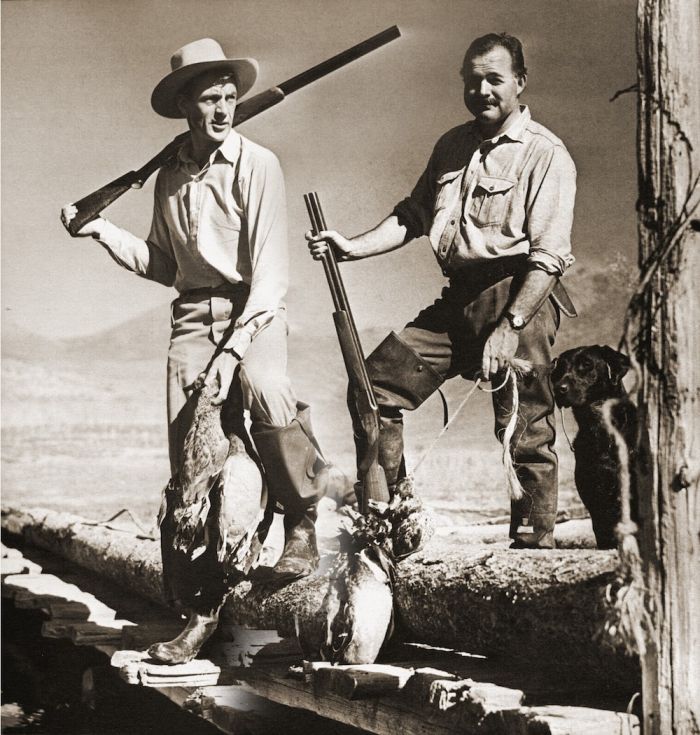
What were some of the biggest surprises you came across?
How many actors today list Cooper as a favorite and an inspiration, including Liam Neeson, Daniel Day-Lewis, Morgan Freeman, Al Pacino, Tom Hanks, Chris Pratt, Djimon Housou, Sam Shepard (who even wrote a short story: Gary Cooper or the Mountains), Tommy Lee Jones, and—no surprise—Clint Eastwood.
Also, it surprised us just how shy Ernest Hemingway was, and how debilitating his bipolar personality was. He would go up to six weeks down, down, down until he would surface and be six weeks up, up, up. Two entirely different human beings. After two plane crashes within 24 hours he was never mentally the same again. For seven years, he battled his depression and the brain injury from the plane crashes. He was genuinely heroic
Neither Cooper nor Hemingway resented when the other would be critical of him. Both respected each other and things they would never tolerate from someone else, Cooper and Hemingway could tolerate from each other.
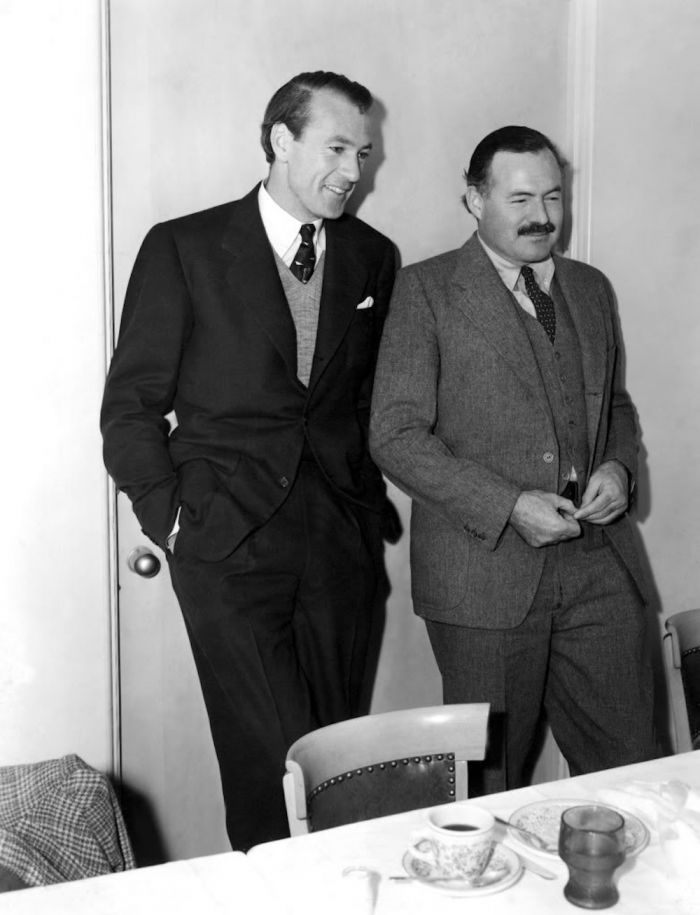
What would you like the audience to take away from this film?
For the audience to look at these two men in a fresh light—their careers, their artistic legacy, their place within 20th century culture. If you’ve never heard of Gary Cooper, perhaps this might encourage you to check out some of his films. If you’re only familiar with Hemingway because you were forced to sleepwalk your way through the Old Man And The Sea in high school, give him another shot with his many short stories or perhaps A Farewell To Arms and For Whom The Bell Tolls.
What is a masculine friendship? There is something called the Quigley Poll, which for 85 years has been measuring the top 10 box office stars each year; started in 1932. In this amount of time we’ve had the Great Depression, WWII, women in the work force, the fifties, Betty Friedan, the sixties, Black Power, the Women’s Movement, Vietnam, Billy Jean King and Bobby Riggs/Battle of the Sexes, glass ceilings; right up to today, 2017, with Serena Williams as a Sports illustrated model, transgender rights, etc. All of these seismic changes. And yet, in the 85 years of the Quigey Poll, the three actors with the longest reigns are Gary Cooper, overlapped by John Wayne, overlapped by Clint Eastwood. You can argue about Cooper being a much better and more sensitive actor than Wayne or Eastwood, but you can’t deny that there is a strong patriarchal lineage over almost a century of massive upheaval with the three of them; each is tall, lean, strong, stoic. With all the changes in these 85 years, why is this?

Your next film is about Elmore Leonard. What is the focus of that project?
Elmore Leonard is one of the greatest American writers. He created an America as real as Mark Twain’s Hannibal, William Faulkner’s Mississippi, the London of Dickens and Doyle. He has influenced more writers in the past fifty years than any other. Only his mentor, Ernest Hemingway, has influenced more writers.
In the late eighties, I met a remarkable filmmaker, Craig Gilbert. More than a decade earlier, Craig had made such documentaries as My Left Foot, the Christy Brown story; Margaret Mead's New Guinea Journal (Craig spent six weeks with Mead in the South Pacific); and An American Family, a multi-part documentary on the Loud family of Santa Barbara, California. This public-television documentary revolutionized documentary filmmaking. Craig served as Executive Producer on The True Gen. He was integral to its very marrow. He is now Executive Producer on the Elmore Leonard documentary, and perhaps even more integral. He has been a mentor and inspiration for thirty years and counting.

What about Leonard interested you?
His style. He took Hemingway’s spare style, added humor and then crafted a new way to use a character’s point of view to tell a story. Leonard managed to do away with descriptions of a room, a building, a street, by telling the story through a character’s prism-of-vision. We see only what the character is seeing, and even then, only that which is important to the character.
He is one of the few white writers beloved by black people. His black characters aren’t “the other”—they are part of the whole—they are three-dimensional and they are good and not-so good and very bad. They are real. So, too, are Leonard’s women characters. They are three-dimensional, way ahead of the men, smart and vivid and real. As one of his women says to the brutal villain, “If it’s just between you and me, you don’t stand a chance.”
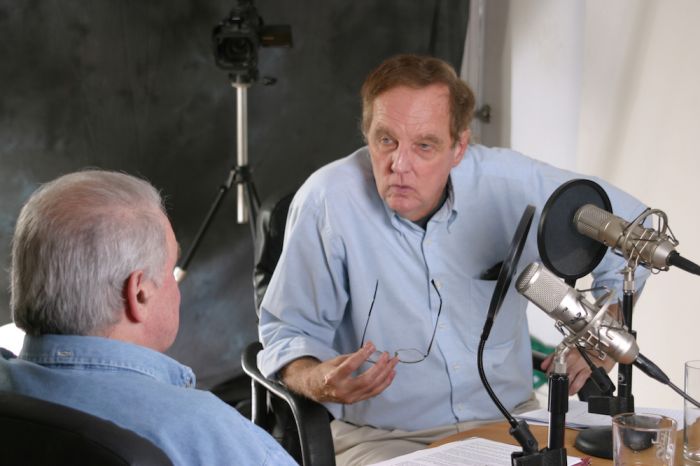
What is the name of the documentary and when are you looking to release the film?
The name in flux right now. It will not be Dickens of Detroit, which has been the working title. I’m diddling around with several possibilities, and envision it ready at the end of summer or early fall.









